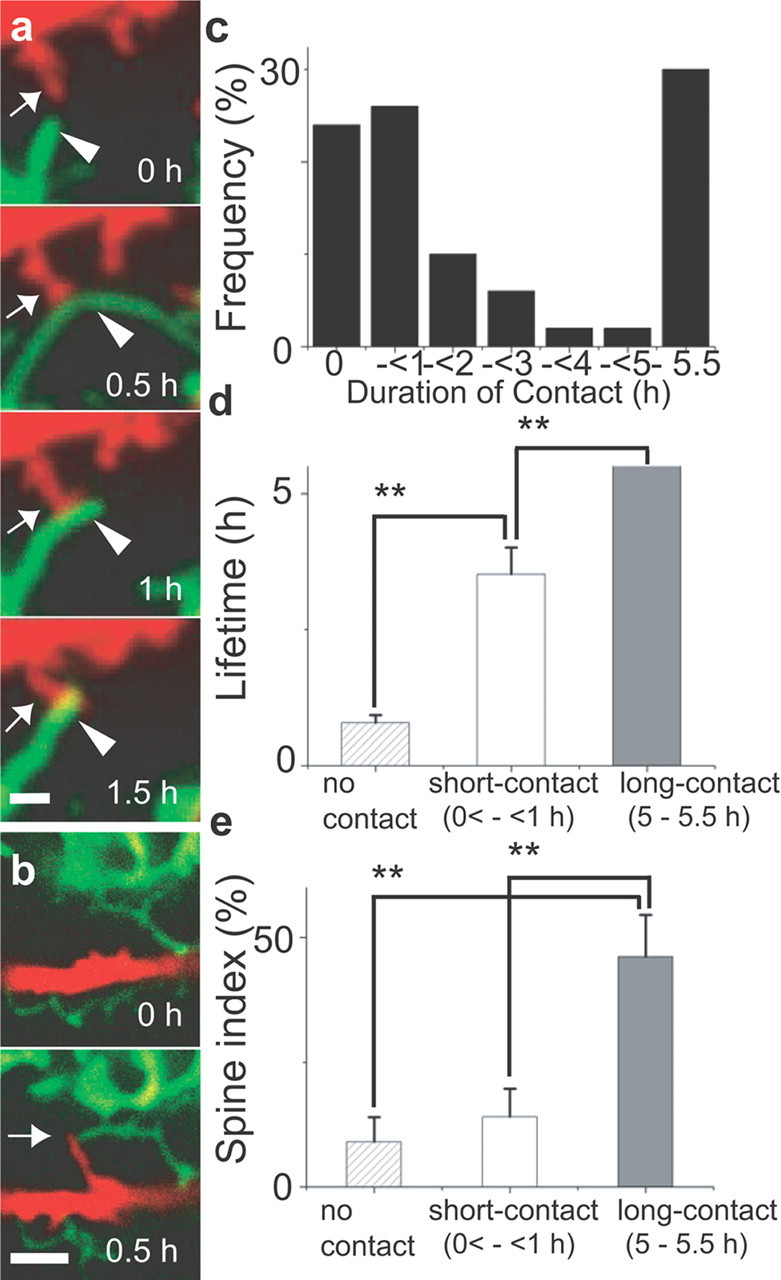Figure 4.

Multiple modes of interaction between astrocytes and dendrites. a, Rapid motility of an astrocytic process (green) and its contact with a dendritic protrusion (red). A dendritic protrusion (arrow) started to contact the side of an extending astrocytic process (arrowhead; 0.5 h). This astrocytic process retracted to the point of the contact (1 h) and was subsequently stabilized (1.5 h). b, Coordinated protrusive activity of dendrites (red) and astrocytes (green). The tips of a new filopodia-like dendritic protrusion and an astrocytic process reached the same destination (arrow). c, Distribution of contact duration of each dendritic protrusion. Contact duration can be classified into three groups: with no contacts, with short contacts (<1 h), and with prolonged contacts (>5 h). d, e, Lifetimes of dendritic protrusions (d) and the tendency to form spines (e) among groups with different duration of astrocytic contacts [n(dendritic protrusion) = 12 (no contact), 13 (short-contact), 15 (long-contact)]. All data are shown as mean ± SEM. **p < 0.01. Scale bars: a, 1 μm; b, 3 μm.
